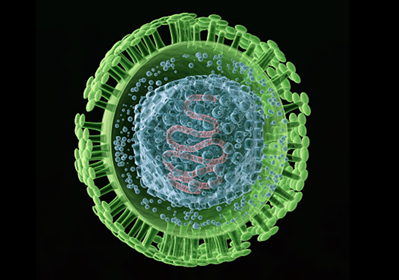
Viruses have come up with a clever way of overcoming the organism it seeks to infect: it turns the host’s biology upon itself. But in the case of an aggressive herpesvirus that descends upon non-human primates, the way that infection takes hold and then makes an insidious turn – causing cancers such as lymphomas and leukemias – has remained poorly understood.
Assistant professor of Biochemistry, Demián Cazalla, PhD, and lead author Carlos Gorbea, PhD, have published in Nature a mechanism of infection that makes use of viral non-coding RNAs (ncRNAs) in previously unreported ways. As its name suggests, ncRNAs do not carry information to make proteins. In this instance, Cazalla’s team shows that a single viral ncRNA, called HSUR2, fools the host’s biology into interfering with its own genes.
Pulling a classic bait-and-switch, HSUR2 attaches to mRNAs from 74 of the host’s genes. Then, it lures in host microRNAs (miRNAs) - a class of ncRNAs that silence gene expression - to the same sites. Using this mechanism, the virus creates conditions that stack the cards in its favor. HSUR2 directly controls this collection of genes to 1) promote uncontrolled cell division to endow host cells with tumorigenic properties, 2) inhibit programmed cell death, called apoptosis, to enhance survival of infected cells, and 3) blunt part of the host’s defense system, the innate immune response.
“Viruses aren’t very good inventors but they are very good thieves,” says Cazalla. “The viral ncRNA bridges the action of the other two RNAs. It makes miRNAs repress mRNAs that they would not normally repress.”
Though the mechanism is novel, Cazalla would not be surprised if it is used in other circumstances. He and his team are now determining whether herpesviruses that cause human disease also deploy ncRNAs in the same way.
“We’ve known about ncRNAs like HSUR2 for over 30 years and now we finally understand what they can do,” says Cazalla. “Now that we know what to look for, I think we will find that they are used in many ways.”